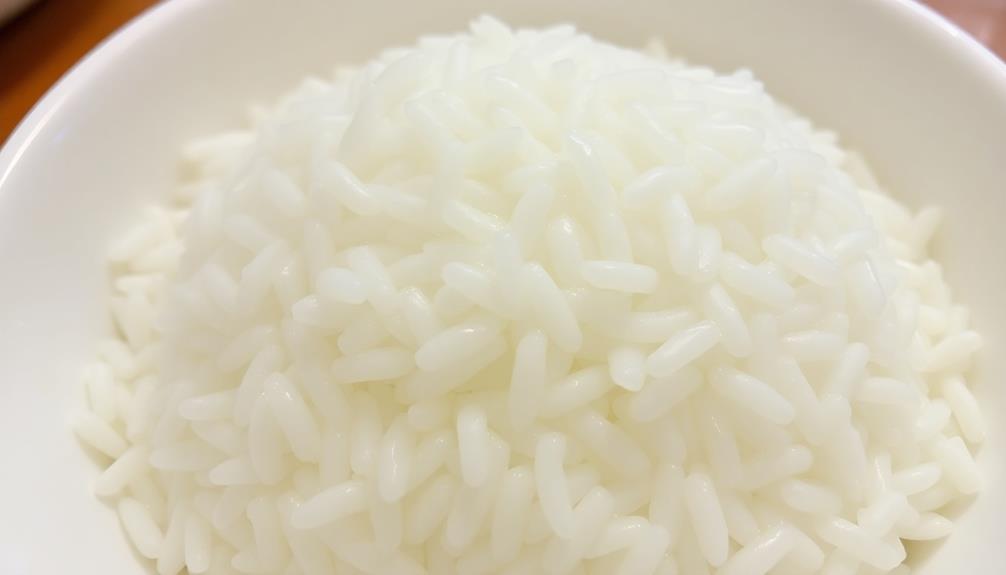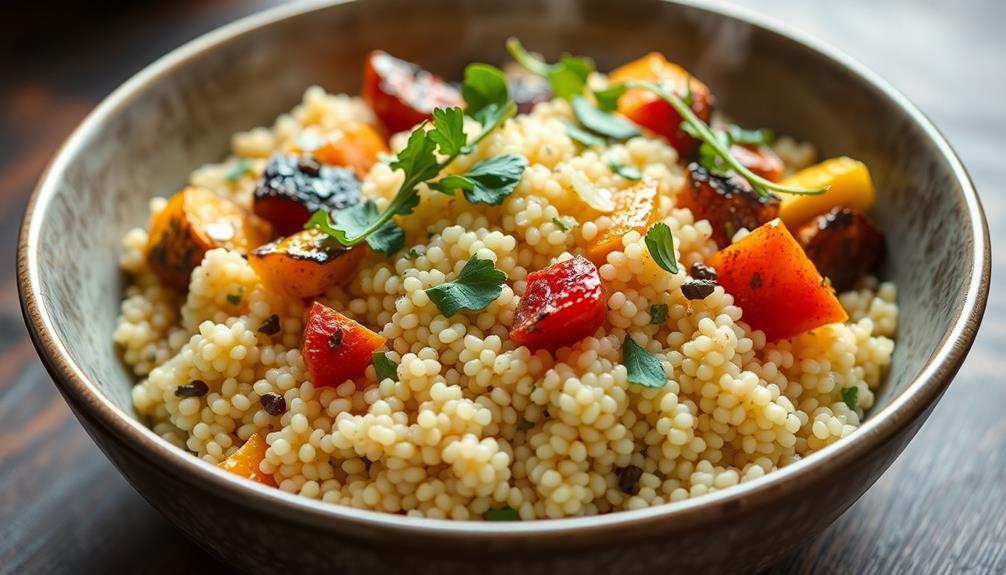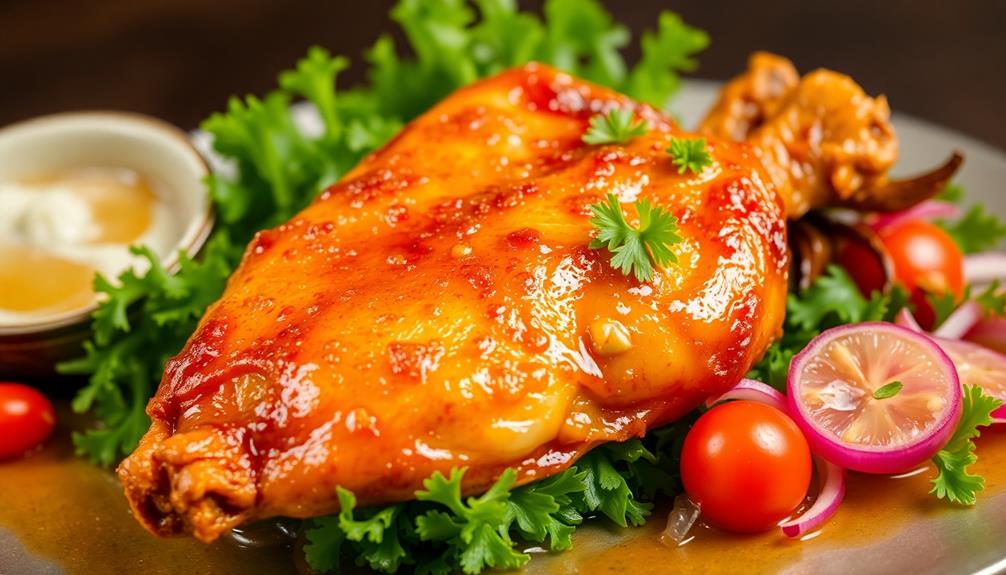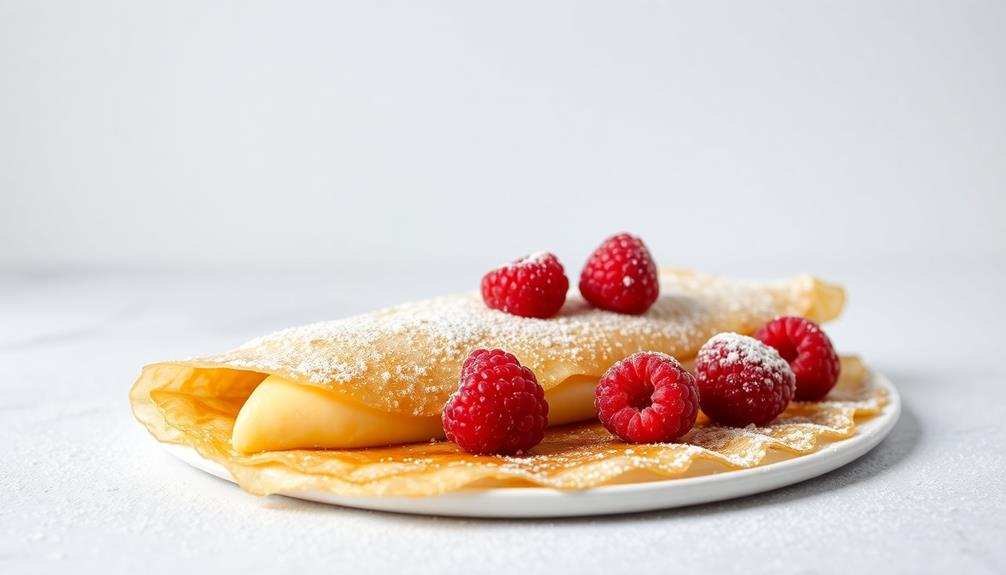Cooking perfect white rice isn't hard – you just need to get the ratio of rice to water right. Start by rinsing the rice to remove excess starch, then add the right amount of water. Bring it to a boil, then simmer until tender. Let it stand covered for 10-15 minutes, and fluff it with a fork before serving. You can jazz it up with a drizzle of sesame oil or some chopped scallions. Mastering this simple technique will give you a versatile base to pair with all sorts of dishes. And if you want to take your rice game to the next level, keep reading for more tips and tricks.
Key Takeaways
- Rinse the rice thoroughly in a fine-mesh strainer to remove excess starch for a fluffy texture.
- Use the appropriate water-to-rice ratio (typically 1:1) based on the specific rice variety for tender, well-cooked grains.
- Bring the rice and water to a boil, then reduce heat to a gentle simmer and cook until the liquid is absorbed.
- Allow the cooked rice to stand, covered, for 10-15 minutes to ensure remaining liquid is absorbed and grains are tender.
- Fluff the cooked rice with a fork before serving to separate the grains and enhance the texture.
History
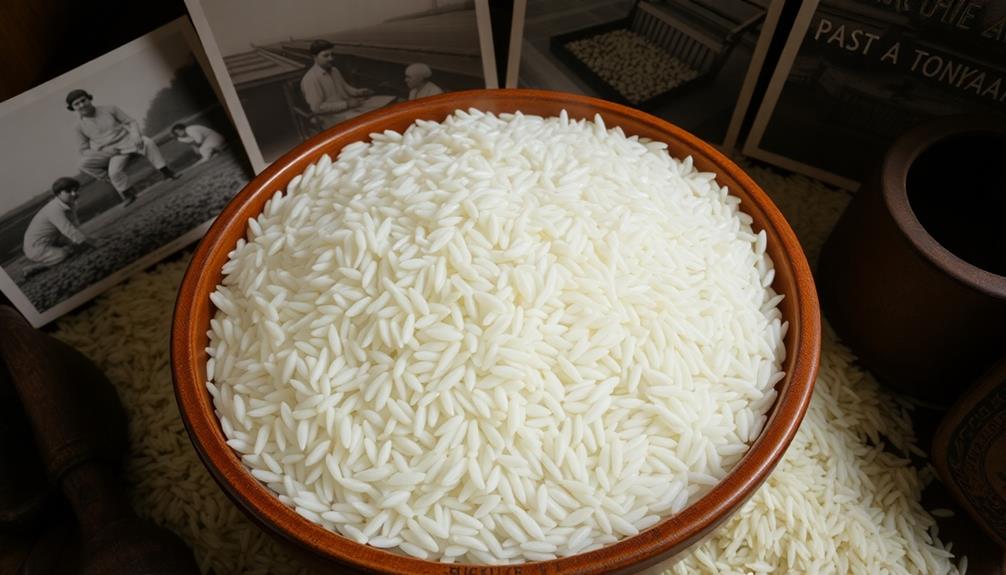
For centuries, rice has been a staple food across Asia, with each region developing its own unique cultivars and cooking methods. From the ancient rice paddies of China to the fragrant basmati fields of India, this versatile grain has nourished civilizations for millennia. In Brazil, rice also plays a significant role in the diet, often served alongside dishes like Rice Carreteiro that highlight its importance in local cuisine.
Rice's origins can be traced back to the Yangtze River valley in China, where evidence suggests it was first domesticated over 8,000 years ago. As trade and cultural exchange flourished along the Silk Road, varieties of rice spread to other parts of Asia, each adapting to local climates and culinary traditions.
The aromatic jasmine rice of Thailand, the short-grain sushi rice of Japan, and the long-grain varieties of India all emerged from this rich heritage.
Today, rice remains a dietary staple for billions of people around the world. Its versatility allows it to be prepared in countless ways, from fluffy white steamed rice to fragrant pilafs and creamy risottos.
Mastering the art of cooking perfect white rice is an essential skill for any home cook or chef.
Recipe
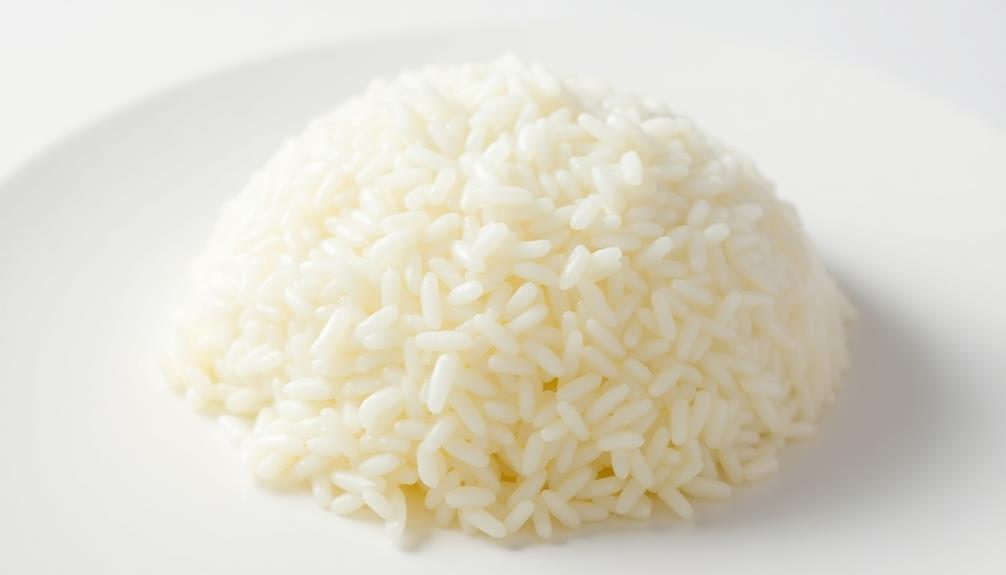
Perfect White Rice
Recipe
For many, cooking the perfect pot of white rice can be a challenge. The key is to use the right ratio of rice to water and to follow a few simple steps to achieve fluffy, tender grains every time. This recipe will walk you through the process, ensuring you end up with a delicious and versatile side dish that can be enjoyed with a variety of main courses.
Cooking white rice may seem like a straightforward task, but there are a few tricks to getting it just right. Following the proper technique will result in rice that's cooked through, with each grain separate and distinct, rather than clumped together or mushy.
Ingredients:
- 1 cup long-grain white rice
- 2 cups water
- 1/2 teaspoon salt
Instructions:
Rinse the rice in a fine-mesh strainer until the water runs clear. This helps remove excess starch and prevent the rice from becoming gummy.
In a medium saucepan, combine the rinsed rice, water, and salt. Bring the mixture to a boil over high heat. Once boiling, reduce the heat to low, cover the pot with a tight-fitting lid, and simmer for 18-20 minutes, or until the rice is tender and the liquid has been absorbed.
Remove the pot from the heat and let the rice sit, covered, for an additional 5 minutes. Fluff the rice with a fork before serving.
For optimal results, use a pot with a heavy, tight-fitting lid to help steam the rice and prevent moisture from escaping. Additionally, resist the urge to lift the lid during the cooking process, as this can release valuable steam and affect the final texture of the rice.
Cooking Steps
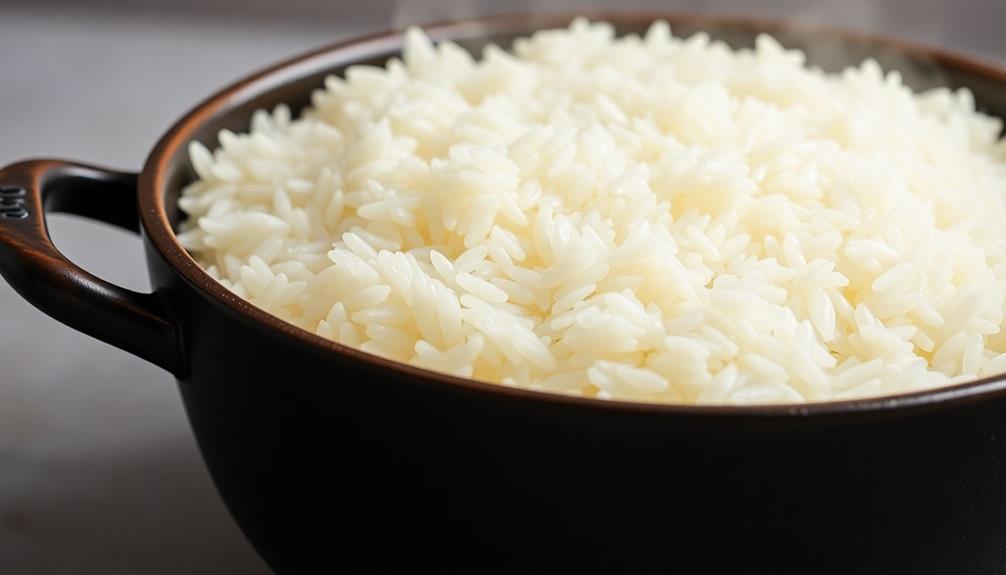
First, you'll want to rinse the rice thoroughly under running water to remove any excess starch.
Then, add the appropriate amount of water and bring the pot to a boil.
Once it's boiling, reduce the heat and let the rice simmer until it's tender.
Step 1. Rinse Rice Thoroughly Before Cooking
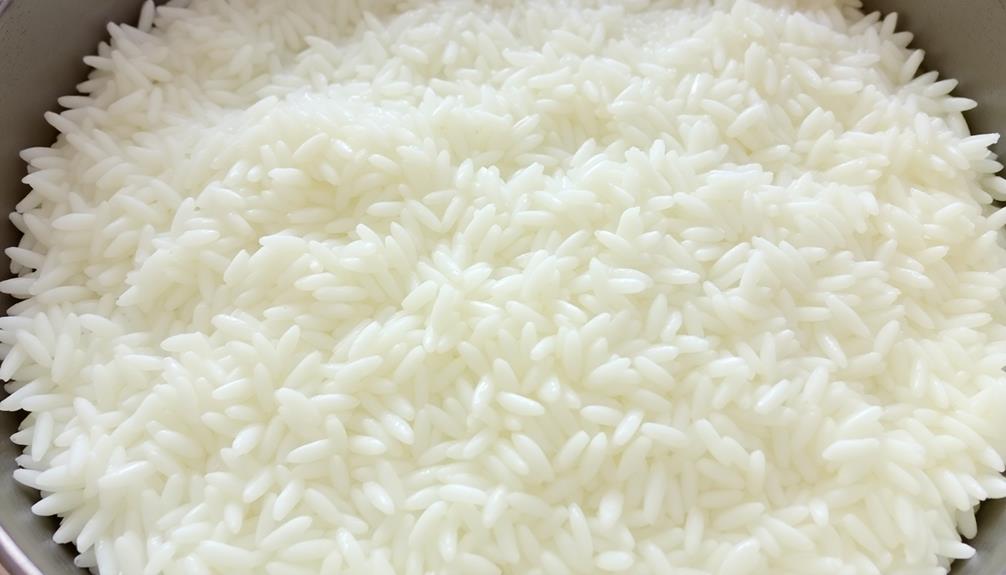
Rinsing the rice thoroughly before cooking is a crucial step in achieving the perfect fluffy texture. This simple process removes excess starch, resulting in grains that are separate and distinct rather than sticky and clumped together.
Start by placing the rice in a fine-mesh strainer and run it under cold, clean water, gently stirring the grains with your fingers. Continue rinsing until the water runs clear, typically 2-3 minutes. This extra effort ensures your rice cooks evenly and has the optimal texture.
After rinsing, allow the rice to drain for a few minutes before adding it to your cooking pot. Rinsing may seem like an extra step, but it's well worth the minor time investment for rice that's light, airy, and perfectly cooked every time.
Your family and friends will be impressed by your mastery of this essential technique.
Step 2. Add Appropriate Amount of Water
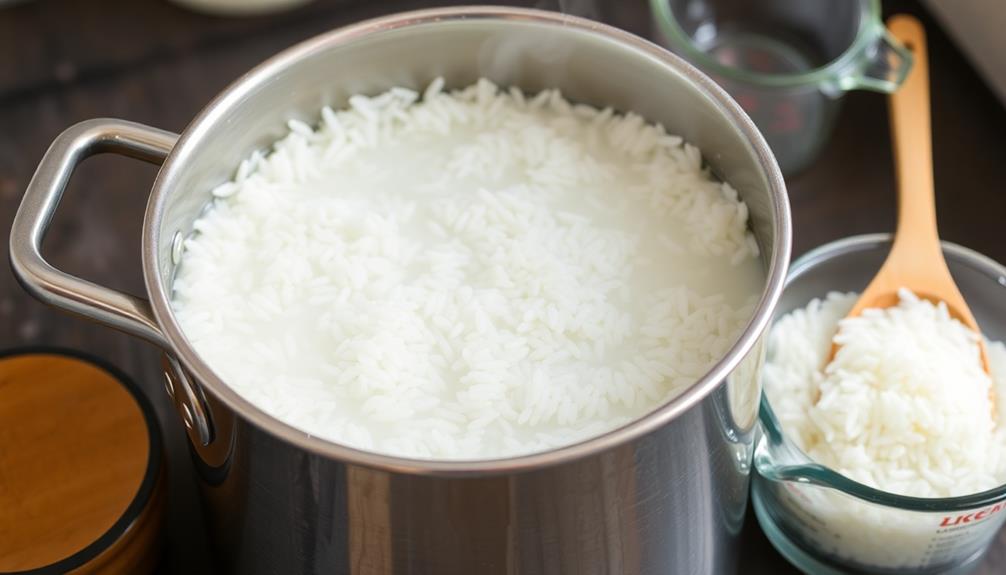
After rinsing the rice, you'll need to add the appropriate amount of water to achieve the perfect texture. The water-to-rice ratio is crucial for getting it just right.
As a general guideline, use a 1:1 ratio – one cup of rice to one cup of water. This simple formula works well for most types of white rice. However, you may need to adjust the amount of water slightly depending on the specific variety you're using.
Jasmine rice, for example, may require a bit less water, while short-grain rice might need a touch more. The key is to pay attention and add water gradually until you reach the desired consistency.
The rice should be tender yet still have a slight bite when cooked through. With a little practice, you'll be able to nail the perfect water-to-rice ratio every time, ensuring fluffy, delicious results.
Step 3. Bring to a Boil

With the rice rinsed and the water measured, bring the mixture to a boil over high heat.
Keep a close eye on the pot, as the water will start to bubble and steam up quickly. Once it reaches a full, rolling boil, this is your cue to reduce the heat.
Lowering the temperature to medium-low, let the rice continue to simmer. You'll notice the bubbles become smaller and more gentle.
This steady, gentle boil is exactly what you want – it allows the rice to cook through evenly without overcooking the exterior.
Set a timer for the recommended cooking time on your package instructions, typically around 15-20 minutes.
Resist the urge to lift the lid and peek, as this can cause the steam to escape and affect the cooking.
Step 4. Reduce Heat, Simmer Until Tender
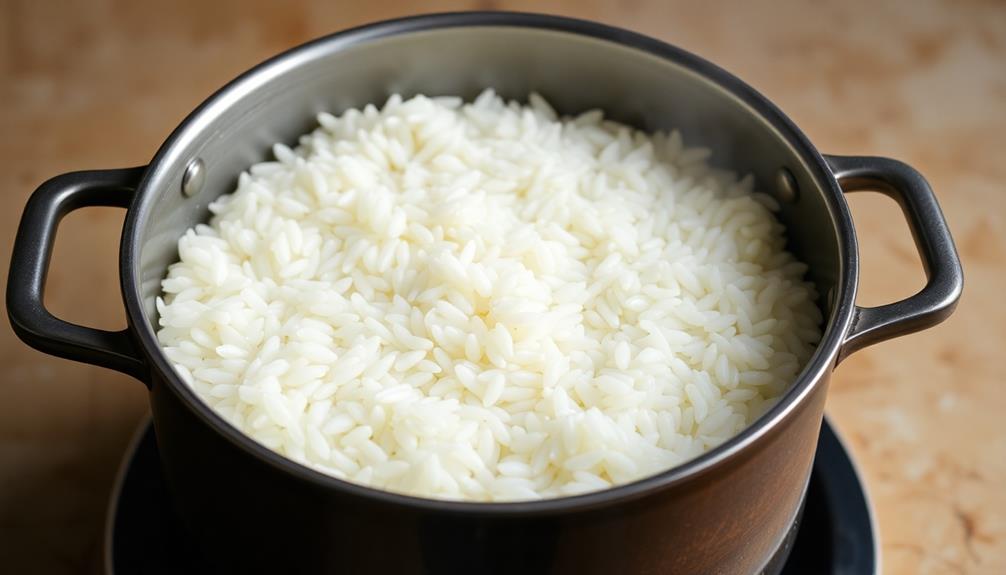
Once you've brought the mixture to a boil, it's time to reduce the heat. This is a crucial step in cooking perfect white rice. Gently reduce the heat to low, maintaining a gentle simmer. You'll want to avoid a rapid boil, as that can cause the rice to become mushy and overcook.
Now, let the rice simmer, uncovered, for about 15-20 minutes, or until the grains are tender and the liquid has been absorbed. Resist the urge to lift the lid and check on the rice too often, as that can let out precious steam and disrupt the cooking process.
As the rice simmers, you may notice some small bubbles breaking the surface. This is a good sign that the rice is cooking properly. Keep an eye on the pot, adding a tablespoon of water if the rice seems to be drying out too quickly.
The goal is a tender, fluffy texture, so be patient and let the rice do its thing. Soon, you'll have perfectly cooked white rice, ready to serve with your favorite dish!
Step 5. Let Rice Stand, Covered
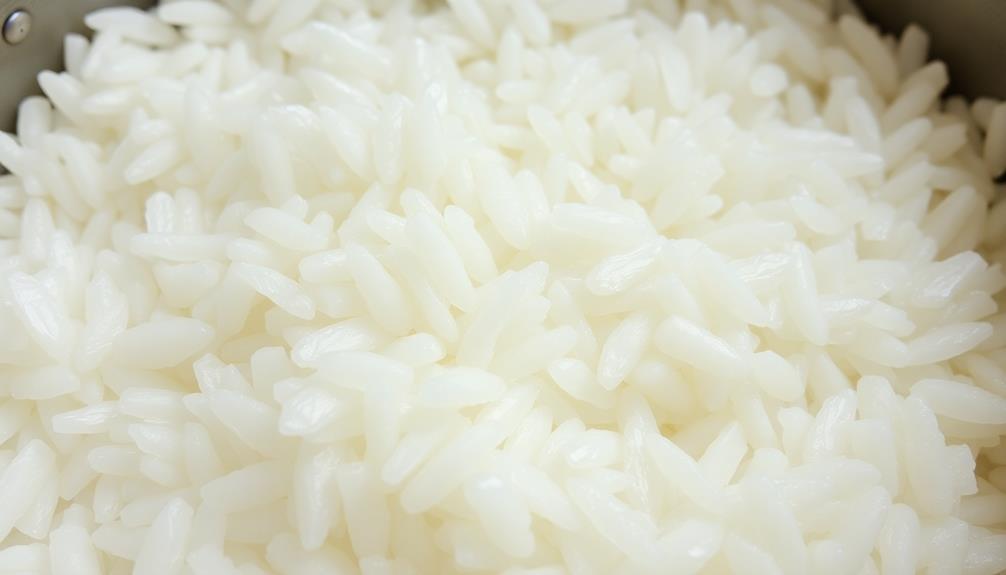
Once the rice has simmered for 15-20 minutes and the liquid has been absorbed, it's time to let the rice stand, covered. This crucial step allows the rice to finish cooking and develop its perfect, fluffy texture.
Turn off the heat, but leave the pot on the burner. Keep the lid tightly sealed, trapping the steam inside. Let the rice stand for 10-15 minutes. Resist the urge to peek – you don't want to release that precious steam!
During this time, the rice will continue to gently cook, with the retained heat and moisture transforming the grains. The rice will finish absorbing any remaining liquid, resulting in tender, separate kernels.
Once the time is up, fluff the rice with a fork before serving. This simple step ensures your rice turns out light, airy, and ready to complement any dish. With just a little patience, you'll have perfectly cooked white rice every time.
Final Thoughts

Perfecting white rice takes patience and attention to detail. But don't be intimidated – with a little practice, you'll be whipping up fluffy, restaurant-quality rice in no time. The key is paying close attention during the last few steps.
Once the rice has simmered and steamed, let it sit for 10-15 minutes. This allows the grains to fully absorb the remaining moisture, resulting in that perfect texture. Resist the urge to lift the lid and peek – you'll lose precious steam!
When ready to serve, fluff the rice gently with a fork. This separates the grains without crushing them.
The final touch? A light drizzle of sesame oil or sprinkle of chopped scallions. These simple garnishes enhance the rice's natural flavors.
With these tips, you'll be serving up platters of fluffy, restaurant-worthy white rice in no time. Time to impress your family and friends!
Frequently Asked Questions
Is White Rice Healthy or Unhealthy?
White rice can be part of a healthy diet, but it's not the most nutritious option. It's higher in carbs and lower in fiber, vitamins, and minerals compared to whole grains. Opt for brown rice or other whole grains when possible for more nutrients.
How to Store Cooked White Rice?
To store cooked white rice, you should refrigerate it in an airtight container. This'll keep it fresh for 3-5 days. Freeze any extra portions to enjoy later – just reheat them when you're ready.
Can I Use a Rice Cooker for White Rice?
Yes, you can absolutely use a rice cooker for white rice. It's a convenient and easy way to cook perfect white rice every time. Just follow the instructions that come with your rice cooker for best results.
How Much Water per Cup of White Rice?
You can typically use a 1:1 ratio of water to white rice when using a rice cooker. Measure the rice, then add an equal amount of water for a simple, foolproof method.
What Is the Best Type of White Rice?
The best type of white rice depends on your preference and the dish you're preparing. Long-grain rice, like basmati or jasmine, works well for fluffy, separate grains, while short-grain rice is stickier and better for sushi or risotto.

